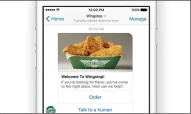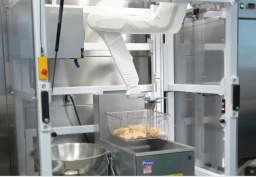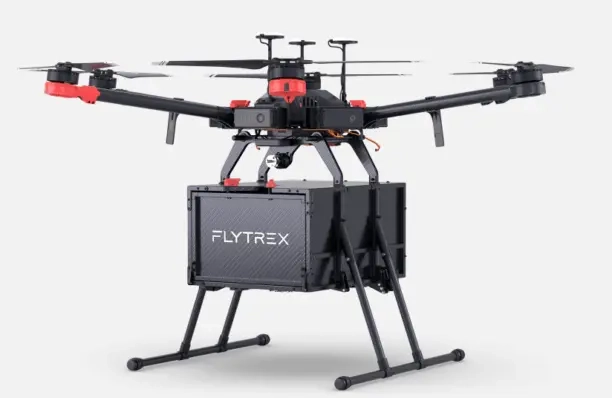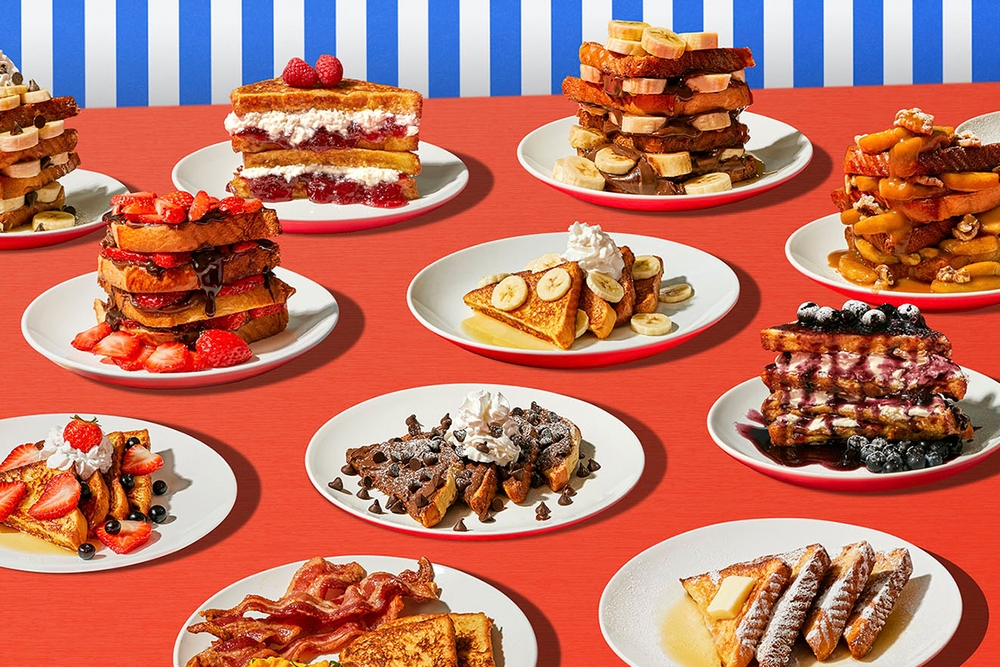The emergence of ChatGPT has sparked widespread discussion about Artificial Intelligence (AI), mainly because of its amazing ability to handle just about any text-based task. AI is transforming tons of industries around the globe in many ways, from automating customer service to enhancing order efficiency. For this reason, it’s no surprise that restaurant owners have been growing curious about how to tap into AI’s potential, with a good number having already successfully integrated such technologies to optimize their business. Join us as we explore how to use AI in restaurants with some of the most innovative examples today.
What exactly is AI?
Before we jump into the list, it’s important for us to first understand what AI is and how it works, so we can see the full picture of how it can potentially help restaurant owners like you. Below you will find the most common AI applications used today along with real-world examples of each one.
Different types of AI
1. Machine Learning
Machine Learning (ML) algorithms enable computers to learn from data and improve their performance over time without explicit programming. Common techniques within ML include supervised learning, unsupervised learning, and reinforcement learning.
Online platforms like Amazon and Netflix use ML algorithms to analyze user behavior and preferences to provide personalized recommendations for products or content.
2. Deep Learning
A subset of machine learning, deep learning employs computing systems inspired by the brain called “artificial neural networks” to model complex patterns in data. It has been particularly successful in tasks such as image and speech recognition, natural language processing, and playing games.
Google Photos uses deep learning-based image recognition to identify objects, people, and scenes in photos, enabling easy organization and searching of images.
3. Natural Language Processing
NLP focuses on the interaction between humans and computers using natural language. It encompasses tasks such as sentiment analysis, machine translation, and question-answering systems.
ChatGPT is currently the most popular example of NLP. It is a language model that understands and generates human-like text, allowing it to engage in coherent conversations, answer questions, and complete various text-related tasks. ChatGPT utilizes vast quantities of textual data and leverages highly refined learning algorithms to interpret and generate responses to user inputs.
4. Computer Vision
This type of AI deals with the acquisition, analysis, and understanding of visual information. It enables computers to recognize and interpret images and videos, with applications in facial recognition, object detection, and autonomous vehicles.
Apple’s Face ID uses computer vision techniques to recognize and authenticate users’ faces, allowing secure access to devices and applications.
5. Robotics
AI-driven robotics focuses on the development of machines capable of performing tasks in the physical world, either autonomously or semi-autonomously.
Tesla’s Autopilot and Waymo’s self-driving cars use AI-driven robotics to navigate and make decisions on the road, with minimal human intervention.
6. Expert Systems
These are AI programs designed to simulate human expertise in specific domains, such as medical diagnosis, financial planning, or legal advice. They use knowledge bases and rule-based systems to provide recommendations and solutions.
IBM’s Watson for Oncology is an expert system that helps doctors diagnose cancer and recommend treatment plans based on the analysis of medical literature, patient data, and clinical expertise.
7. Evolutionary Algorithms
Inspired by the process of natural selection, these algorithms are used to optimize problems by iteratively generating solutions and selecting the best-performing ones to create subsequent generations.
NASA has used evolutionary algorithms to design antennas for space missions. These algorithms iteratively generate and optimize antenna designs, resulting in novel and efficient shapes that meet mission requirements.
Now that we’ve explored the seven most common AI applications, you might be wondering how all of this translates to the restaurant industry. Well, you’re in for a treat! In the next section, we’ll uncover how renowned brands like Chipotle, Taco Bell, and Wingstop have successfully implemented a mix of these AI technologies to revolutionize their operations. So, if you’re eager to learn how AI is making a real impact in the world of dining, keep reading and let’s dive in!
Voice bots for taking orders
Let’s first take a look at how to use AI in restaurants to handle voice ordering, a popular application that’s transforming the industry.
Wingstop
Wingstop has partnered with ConverseNow to implement AI voice-powered virtual assistants for automating phone orders at select locations. The virtual ordering assistants, which can process orders in both English and Spanish, offer personalized recommendations and integrate with the restaurant’s point-of-sale system.
The technology is already in use at 1,200 restaurants across 40 states, including some Domino’s Pizza, Fazoli’s, and Anthony’s Coal Fire Pizza locations. ConverseNow has raised a total of $28.8 million in funding, with a recent $10 million round led by Enlightened Hospitality Investments.
Chipotle
Chipotle Mexican Grill has implemented AI-powered voice assistants for phone orders across 1,800 locations. The fast-casual chain began testing the technology, which they call “human-backed machine learning,” in early 2018. The AI system actively listens, makes suggestions, and learns from each transaction to better understand customers’ ordering preferences.
The move is aimed at improving customer convenience, allowing them to order, pay, and skip the line for pick-up. Although it’s too early to gauge its impact on sales, Chipotle reports a high rate of repeat use and positive feedback.
Checkers & Rally’s
Checkers & Rally’s has partnered with Valyant AI to provide its conversational AI system, Holly, for franchisee-owned drive-thrus. Following a successful pilot program, the deal allows franchise owners to incorporate Holly into their business operations. The voice assistant can upsell customers, make recommendations, and improve over time thanks to Valyant AI’s deep neural network.
Valyant AI, which started in 2019, has raised $4.5 million and is expanding to new restaurants. This partnership reflects the growing trend of restaurants adopting voice AI. Checkers & Rally’s aims to provide franchisees with AI options that enhance customer and team member experiences.
Kitchen Robot Assistants
Robots have long been a popular technology used in the restaurant industry, and with the integration of AI, their capabilities have only reached new heights, revolutionizing the way restaurants operate. In this section, we’ll explore how to use AI in restaurants to assist with various kitchen tasks through the domain of robotics.
Chippy
Chipotle is introducing “Chippy,” a robot that makes tortilla chips, as part of its efforts to improve operations and employee performance using AI-powered technology. Set to be tested in a California location, Chippy aims to assist workers and enhance the customer experience.
Alongside Chippy, the company is piloting a demand-based cooking system that uses AI to optimize cooking processes, minimize food waste, and manage workflow based on customer volume and inventory forecasts.
Chili’s
Chili’s CEO Kevin Hochman has implemented kitchen automation to improve operations, scrapping robotics and drone testing in favor of high-tech grills and ovens. The new grills, part of the Kitchen of the Future program, can cook a medium steak in under 3 minutes and are being tested in 53 restaurants. These grills save Chili’s millions of dollars each year by reducing the number of incorrectly cooked steaks sent back by customers. The improved equipment has led to higher tips, easier kitchen training, and better employee retention.
The National Restaurant Association reports that 50% of US operators expect lower profits in 2023, prompting chains like Chili’s to focus on internal improvements to remain competitive.
Texas A&M
Texas A&M University, facing labor shortages and rising food costs, implemented the Picnic Pizza Station to improve the efficiency of their pizza operations. Chartwells Higher Ed’s district executive chef, Marc Cruz, oversaw the four-month pilot program, during which they made 4,550 pizzas and reallocated 8 hours of daily labor to other kitchen needs.
The pizza station received positive feedback, with 80% of surveyed students believing that the robotic technology helped produce consistent pizzas. The success of the pilot has led to plans for deploying the Picnic Pizza Station at more campuses across the U.S., including the University of Chicago, Missouri State, and Indiana University-Purdue University Indianapolis.
Flippy 2 and more
Miso Robotics introduced Flippy 2 back in late 2021, an upgraded food-preparation robot that can perform twice as many fry-station tasks as its predecessor. Developed using feedback from White Castle, Flippy 2 takes up less space, increases production, and automates basket management. The robot is designed to improve kitchen efficiency, productivity, and safety. Flippy 2 includes a customizable AutoBin system for lower-volume and specialty foods, which can automatically drop food into the frying basket without human assistance. Flippy 2 can increase throughput by 30%, handling around 60 baskets per hour. Miso Robotics offers its products through a Robotics-as-a-Service model.
Miso is also developing other products such as Sippy, Flippy Lite (Chippy), and CookRight coffee.
In March 2023, Miso closed a $15 million equity round from a strategic global investor, which will help the company develop new robotic solutions for the restaurant industry. Miso plans to secure additional capital, increase Flippy unit installations, and release new products in the future.
ChatGPT
Now, let’s delve into how to use AI in restaurants for creative purposes, with a focus on ChatGPT.
Dodo Pizza
Dubai restaurant Dodo Pizza used ChatGPT, an artificial intelligence chatbot by OpenAI, to create a unique pizza recipe for their menu. Chef Spartak Arutyunyan sought creative help from ChatGPT, which suggested a recipe featuring lamb kofta, tahini sauce, sumac, and zaatar. While the chef made some modifications, the ChatGPT-inspired pizza was made available at the Dubai Marina location opening on February 18, 2023. This is not the first time AI has been utilized for recipe generation, as OpenAI’s ChefGPT platform provides meal plans and recipe recommendations to thousands of users.
Jersey Mike’s and Taco John’s
Jersey Mike’s and Taco John’s are set to benefit from advanced AI-powered “Genius” tools as digital marketing company SOCi raises $120 million to develop and implement them. By automating marketing tasks for restaurant chains and multi location businesses, the first Genius tool will employ OpenAI’s ChatGPT chatbot to provide instant responses to online customer reviews. The funding round, led by JMI Equity and supported by Vertical Venture Partners, Blossom Street Ventures, and Renew Group Limited, aims to help SOCi expand its offerings and optimize marketing tasks for businesses like Jersey Mike’s and Taco John’s across various locations.
ChefGPT
Curious how you can use the full potential of ChatGPT in your restaurant? ChefGPT, an AI-powered digital chef, has officially launched following a successful early release. With over 35,000 users worldwide and 33,000 generated recipes, the response has been overwhelmingly positive. The latest version includes new features like PantryChef for generating recipes with available ingredients, MasterChef for specific or new recipes, MacrosChef for macronutrient-based recipes, MealPlanChef for customized meal plans, PairPerfect for drink pairings, and a shopping list feature.
ChefGPT offers a free plan with limited access and a Pro plan for $2.99 per month or $29.99 per year, which provides unlimited access to all features.
AI-Powered Appliances
Next, let’s examine how to use AI in restaurants through innovative appliances that enhance customer experiences and streamline operations.
Subway
Subway introduced a grab-and-go smart fridge stocked with pre-made sandwiches, chips, and soda on the University of California San Diego campus. The fridge uses weight-sensitive shelves to charge customers and a UV-C light to sanitize itself after each use. It also features AI and speech recognition software, allowing customers to ask the machine about the available offerings.
The smart fridge concept has received positive feedback from college students, and Subway plans to expand the concept to other convenient locations such as airports and hospitals.
Samsung
SmartThings Cooking is a feature integrated into Samsung’s SmartThings ecosystem. It offers a range of benefits that can positively impact both home cooks and restaurant owners alike such as:
- Tailored recipe recommendations for creative customer-focused menus
- Integration with online grocery services for efficient ingredient sourcing and simplified inventory management
- Step-by-step cooking guidance to enhance staff skills and ensure consistent and high-quality dishes
- Seamless connectivity with smart appliances for improved efficiency and resource management
Overall, SmartThings Cooking has the potential to revolutionize the restaurant industry by streamlining various aspects of food preparation, menu planning, and overall operational efficiency.
Security
Kura Sushi
The Kura Sushi chain in Japan plans to combat food tampering in its conveyor-belt restaurants by using AI-powered security cameras. This move is a response to a viral video trend called “sushi terrorism,” which features people conducting unhygienic acts at such restaurants. By early March, Kura Sushi aims to upgrade its existing cameras, which currently track the dishes customers take to determine their bill. The upgraded system will alert employees if it detects suspicious behavior, such as customers putting sushi back on the plates after picking it up with their hands.
Final Thoughts
With these wonderful examples of AI integration in the restaurant industry, we hope we’ve inspired and motivated you to explore the endless possibilities that AI can bring to your own restaurant. By examining the groundbreaking advancements made by restaurant chains worldwide such as Chipotle, Dodo Pizza, and Kura Sushi, you can begin to envision the potential improvements and opportunities AI can offer your restaurant.
About Future Foods
Future Foods specializes in making the process of starting and operating a virtual brand both easy and simple for restaurant owners. By offering innovative solutions and comprehensive support, Future Foods empowers restaurateurs to effortlessly expand their businesses with virtual brands that cater to the modern consumer.
To discover more about Future Foods and how they can help your restaurant excel, book a demo and explore the potential of virtual brands for your business.
For the latest news and insights about the future of the restaurant industry, be sure to visit futurefoods.io/blog regularly.






